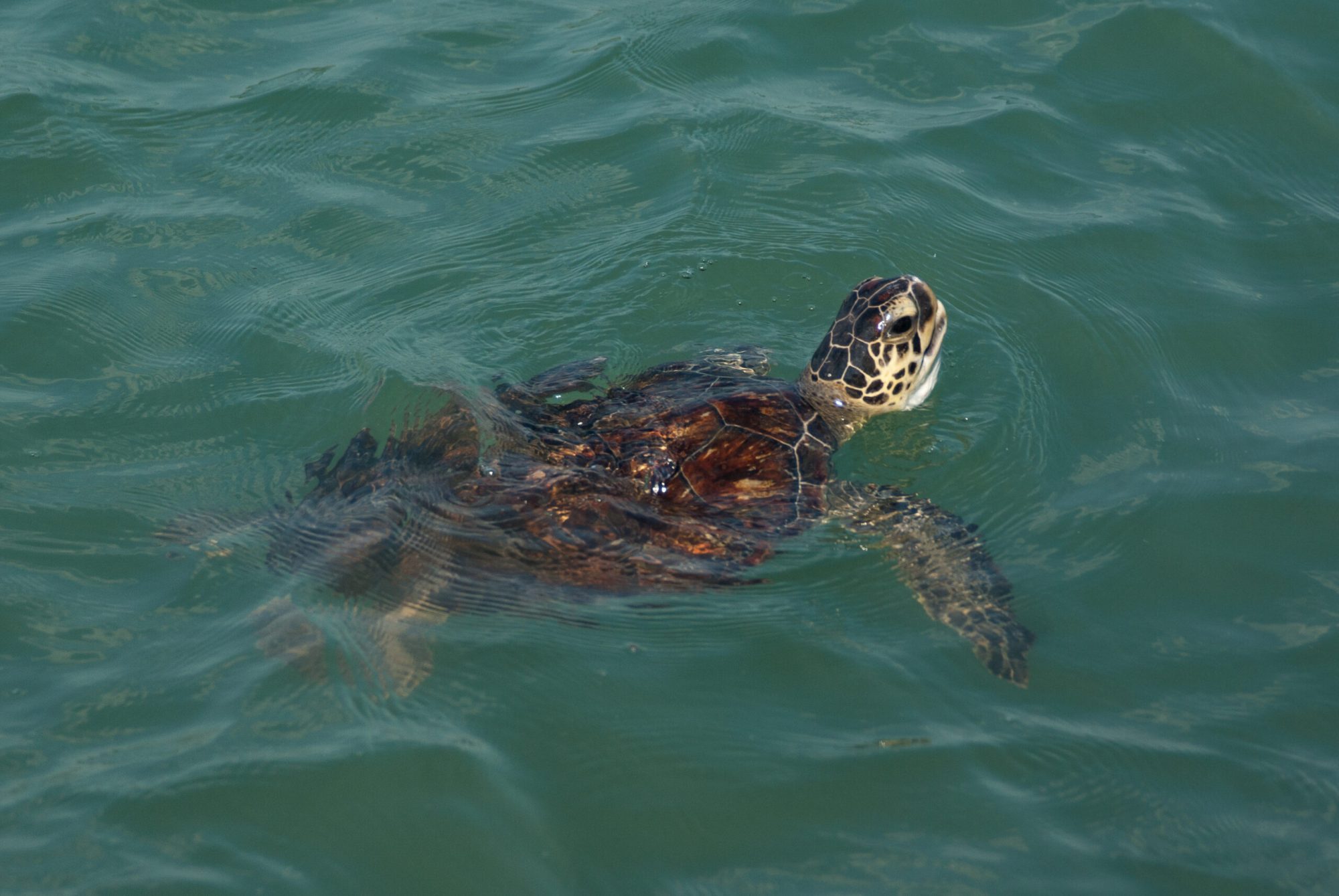It’s Sea Turtle Season!

Here in these Hilton Head waters we are fortunate to host four of the seven majestic sea turtle species. Loggerheads are the most common in this area, but Leatherbacks, Kemp’s ridleys and Green Sea turtles also call our lowcountry waters home.
The Loggerhead is the most common in this area and was named the official reptile of South Carolina in 1988. It earned its name for its massive head and powerful jaw which enables them to feed on hard shelled critters like whelks and conch. Loggerheads can weigh as much as 300 pounds and measure up to four feet in shell length.
Green sea turtles are named for the green fat in their body due to their vegetarian diet which consist largely of sea grass. The largest hard shelled turtle species, this turtle can grow to an average shell length of five feet and weigh approximately 350 pounds. Green turtles don’t typically nest on our shores, but the juveniles regularly forage our waters from April through November.
Leatherbacks are unique because they don’t have a hard shell, but a leathery shell with longitudinal ridges. They claim the title of “largest sea turtle” weighing in at 800 to 1300 pounds. In fact, the largest sea turtle on record was a Leatherback found stranded on the coast of Wales, weighing roughly 2,020 pounds. Leatherbacks migrate through our near shore waters in the spring and fall, feasting on jellyfish as they commute back and forth between their feeding grounds in Nova Scotia and their tropical nesting beaches.
The Kemp’s ridley is the smallest and rarest, weighing about 100 pounds and measuring only two feet in length. Like the Leatherback and Green Sea turtles, these small sea treasures don’t typically nest in South Carolina, but they come into our inshore and near shore waters in warmer months to snack on our delicious blue crab population.
Sadly, all of the sea turtle species in our area are listed as an endangered species. They are protected by both federal and state law, but their numbers are still being dramatically impacted by both natural and human-caused threats. Sharks are the turtle’s primary natural predator, but humans offer any variety of issues. Destruction of natural habitat, boat propeller damage, pollution, commercial fishing and climate change all affect sea turtle mortality.
As individuals we can help protect our sea turtles in any number of ways. If you must use a plastic bag or spot one in the environment, knot it up before throwing it away. This prevents them from blowing out of landfills or trash cans. Most importantly, if your rent or own a property that is visible from the beach, turn your exterior lights off after 10pm from the beginning of May to the end of October. If you are on the beach after dark during this time frame, use a red bulbed flashlight and avoid using your cell phone. Lights from anything other than the moon can be disorienting for newly hatched turtles trying to make their way to the ocean waters.
When you are out on the water this month, keep your eyes peeled and you might be lucky enough to spot a sea turtle eyeing you from our balmy waters. To increase your odds, you can book a kayak or boat tour with one of Outside Hilton Head’s experienced guides. Visit outsidehiltonhead.com to learn more.
